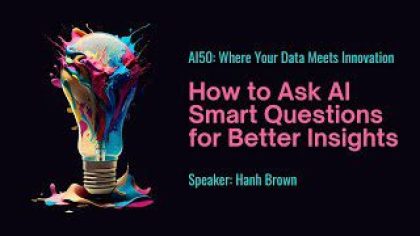Table of Contents
ToggleWe’re in the midst of a technological revolution that’s shaking the very foundations of healthcare, redefining what it means to stay fit and healthy, particularly for older adults. The protagonist of this seismic shift is artificial intelligence (AI), a concept once limited to the realm of science fiction, now a tangible reality.
AI-driven wellness programs are not just reshaping our approach to health but are also unlocking a new era of personalized wellness tailored specifically for older adults. Imagine this, you are in your seventies, maintaining an active lifestyle, managing chronic diseases efficiently, and aging healthily, all made easier by a personal AI wellness coach. Sounds futuristic? It’s not. It’s the here and now.
AI in wellness isn’t just a buzzword. It’s a paradigm shift aimed at preventing chronic diseases and fostering healthy aging. Nonetheless, as we venture into this new frontier, it’s crucial to balance the excitement with a healthy dose of skepticism.
While AI presents immense potential for wellness and chronic disease prevention, it’s not without its pitfalls. It’s akin to walking a tightrope. On one side, there’s a world of AI-driven health benefits, and on the other, potential drawbacks and ethical considerations.
AI Wellness Programs for Healthy Aging
In a world increasingly driven by technology, AI has found a prominent place in promoting wellness. From personalized fitness plans to motivation for goal setting and providing data-driven insights, AI is revolutionizing how we approach health and wellness.
Advantages of AI-Driven Wellness Programs

One of the most significant advantages of AI-driven wellness programs is the ability to tailor fitness and nutrition plans according to individual needs. Imagine a world where your wellness program knows your health goals, dietary preferences, and workout routines even better than you. This is the promise of AI in wellness.
Personalized fitness and nutrition plans are not a one-size-fits-all proposition. They require understanding an individual’s unique needs, goals, and lifestyle, and this is where AI shines. By leveraging machine learning algorithms, AI can analyze patterns and trends in your health data, enabling it to create fitness and nutrition plans that are as unique as your fingerprint.
These plans not only cater to your current health status but also evolve with you, adapting to changes in your lifestyle, health condition, and goals. In addition to personalization, AI-driven wellness programs are excellent motivators. Staying motivated is often the toughest part of any wellness journey.
AI can provide a solution by setting achievable goals based on your personal data and even adjusting these goals as you progress. Think of it as having a personal coach who understands your strengths and weaknesses, pushing you just enough to stay motivated but not enough to feel overwhelmed.
Moreover, AI can keep you accountable. With constant monitoring and timely feedback, AI can ensure you stay on track, nudging you gently when you veer off course. In this way, AI not only sets goals but also fosters the discipline and motivation needed to achieve them.
Lastly, and perhaps most importantly, AI-driven wellness programs can provide data-driven insights for lifestyle improvements. By analyzing your health data, AI can identify patterns and trends, highlighting areas of concern and suggesting potential improvements.
Disadvantages of AI-Driven Wellness Programs
While the benefits of AI-driven wellness programs are compelling, it’s also crucial to consider potential disadvantages, which include overreliance on technology, privacy concerns, and a limited personal touch.
One of the major concerns regarding AI-driven wellness programs is the potential for overreliance on technology. As these programs become more sophisticated, there’s a risk of becoming too dependent on them for health and wellness decisions.
Despite the accuracy of AI, it’s essential to remember that these systems are tools meant to aid in wellness, not to replace human judgment or the advice of healthcare professionals. Overreliance could lead to a lack of personal accountability, which is a key element of maintaining a healthy lifestyle.
Privacy concerns and data security are also significant issues when it comes to AI-driven wellness programs. These programs often require access to a wealth of personal information, from basic demographic data to in-depth health and lifestyle data. While this data is essential for personalized plans, it also raises questions about who has access to this information and how it’s used.
Despite advancements in data encryption and anonymization, the risk of data breaches remains. Therefore, it’s critical for users to understand the data privacy policies of these programs and for providers to be transparent about their data handling practices.
Lastly, a common criticism of AI-driven wellness programs is their lack of personal touch and empathy. While AI can simulate human interaction to an extent, it’s not capable of truly understanding human emotions or providing the emotional support that a human coach or therapist can offer.
AI in Preventing Chronic Diseases
As we pivot from understanding the role of AI in wellness, it’s important to delve into the critical function it plays in chronic disease prevention. AI’s ability to analyze vast amounts of health data allows for early detection, risk assessment, and targeted interventions, all essential tools in the fight against chronic diseases.

AI in Early Detection and Risk Assessment
One of the most promising applications of AI in healthcare is its capacity for early detection and risk assessment of chronic diseases. AI’s ability to analyze large volumes of health data, identify patterns, and predict outcomes can play a pivotal role in preventing the onset of chronic conditions.
By analyzing health data, AI can identify risk factors that might predispose an individual to certain chronic diseases. These could be lifestyle factors like poor diet, lack of physical activity, or smoking, or physiological parameters like high blood pressure or cholesterol levels. By recognizing these risk factors early, AI can empower individuals to take proactive measures to mitigate these risks.
AI’s predictive capabilities also enable it to identify early warning signs of chronic diseases. For instance, AI algorithms can analyze patterns in blood glucose levels to predict the onset of diabetes or detect subtle changes in heart rhythm to warn of potential cardiovascular disease. These early warnings can prompt individuals to seek medical intervention before the disease progresses, significantly improving the chances of successful treatment and management.
AI can also contribute to targeted interventions for high-risk individuals. By identifying those at high risk of developing chronic diseases, AI can inform the design of personalized prevention strategies. For instance, an individual at high risk of heart disease might receive a personalized fitness and nutrition plan focused on improving cardiovascular health, along with regular monitoring and feedback to ensure they stay on track.
These targeted interventions not only improve the effectiveness of prevention strategies but also make efficient use of resources by focusing efforts where they are most needed. In summary, AI’s role in early detection and risk assessment is a game-changer in the fight against chronic diseases.
Potential Challenges of AI in Chronic Disease Prevention
While AI offers impressive potential in chronic disease prevention, it’s crucial to address some potential challenges: the accuracy and reliability of AI predictions, the risk of overtesting and overtreatment, and ethical considerations, including biases in AI algorithms.
Firstly, the accuracy and reliability of AI predictions are not infallible. Although AI algorithms can analyze vast amounts of data and identify patterns that might elude human analysis, they can also make errors.
These errors could stem from several sources, including inaccuracies in the data, issues with the algorithm itself, or the inherent unpredictability of biological systems. Misinterpretations can lead to false positives or negatives, potentially resulting in misdiagnoses or missed diagnoses.
Moreover, the risk of overtesting and overtreatment is a significant concern. The ability of AI to identify risk factors and early warning signs can sometimes lead to excessive testing, even for individuals with low risk. Similarly, the emphasis on early intervention could result in overtreatment, where individuals receive unnecessary or overly aggressive treatments.
Both overtesting and overtreatment can cause unnecessary stress and harm to individuals and also contribute to escalating healthcare costs. Finally, there are critical ethical considerations to bear in mind when using AI for chronic disease prevention. One such issue is the potential for biases in AI algorithms.
Since AI systems learn from the data they are trained on, any biases present in the training data can be perpetuated and even amplified by the AI. For instance, if the training data includes more men than women, the AI could end up being more accurate for men, thereby disadvantaging women. Similarly, if the data is biased toward certain ethnic groups, it could lead to disparities in the accuracy and effectiveness of AI predictions for different populations.
Ensuring Success in AI-Driven Wellness and Chronic Disease Prevention
While AI-driven wellness programs and AI in chronic disease prevention have incredible potential, it’s critical to ensure their successful implementation. A collaborative approach that combines AI and human expertise, along with strategies to overcome barriers to adoption and accessibility, is paramount to their success.

Collaborative Approach: Combining AI and Human Expertise
In the realm of healthcare, AI is an invaluable tool, but it is just that – a tool. It cannot replace the human touch that is so crucial in the field of healthcare. The human touch in healthcare is about empathy, understanding, and personal connection, elements that AI currently cannot replicate.
Building trust and rapport with patients is essential in healthcare, particularly so when it comes to wellness and disease prevention. People are more likely to adhere to a wellness program or a prevention strategy if they trust the source of the advice. While AI can provide evidence-based recommendations, it is the human healthcare provider who can build that trust and rapport with the patient.
Moreover, human healthcare providers play a crucial role in encouraging accountability and self-efficacy. While AI can monitor progress and provide feedback, it is often the encouragement and motivation from a human coach or provider that can inspire patients to take responsibility for their health and believe in their ability to make positive changes.
In this way, a collaborative approach that combines AI with human expertise can leverage the best of both worlds. AI can provide personalized, data-driven insights and recommendations, while human providers can build trust, encourage accountability, and provide the empathetic support that is so crucial in healthcare.
Overcoming Barriers to Adoption and Accessibility
Despite the potential benefits of AI in wellness and chronic disease prevention, several barriers could hinder its adoption and accessibility. These include digital literacy issues, affordability and availability, and the need for ethical implementation.
Addressing digital literacy issues is paramount, particularly among older adults who may not be as comfortable with technology. User-friendly design, clear instructions, and support services can help to make AI-driven wellness programs more accessible to this demographic. Ensuring affordability and availability is another crucial step.
While AI has the potential to democratize healthcare by making personalized wellness programs and early detection strategies more widely available, this potential can only be realized if these services are affordable and readily accessible to all, regardless of their socioeconomic status.
Finally, implementing ethical AI in healthcare systems is essential. This involves addressing potential biases in AI algorithms, ensuring data privacy and security, and setting guidelines for the appropriate use of AI in healthcare.
In conclusion, while AI offers exciting possibilities in wellness and chronic disease prevention, its successful implementation requires a collaborative approach that combines AI with human expertise, as well as strategies to overcome barriers to adoption and accessibility. By addressing these factors, we can harness the power of AI to promote wellness, prevent chronic diseases, and contribute to healthier, longer lives for all.
FAQs
Can AI replace healthcare providers in wellness and chronic disease prevention?
While AI offers numerous advantages, such as personalized wellness plans and early detection of chronic diseases, it cannot replace the role of healthcare providers entirely. Human providers are essential for building trust, providing empathetic support, and encouraging accountability, elements that AI currently cannot replicate. Therefore, a collaborative approach that combines AI with human expertise is likely the most effective strategy.
How can older adults effectively use AI-driven wellness tools?
Older adults can effectively use AI-driven wellness tools by ensuring they have the necessary digital literacy skills. This can be achieved through training, user-friendly design, and support services. In addition, it’s essential to ensure these tools are affordable and readily accessible to older adults, taking into account factors such as income and geographic location.
What are the long-term implications of AI in older adults’ health?
The long-term implications of AI in older adults’ health are promising. AI has the potential to promote wellness, prevent chronic diseases, and improve the quality of life for older adults by providing personalized, data-driven wellness plans, early detection of diseases, and targeted interventions. However, it’s important to note that successful implementation requires addressing potential challenges, such as digital literacy, affordability, and ethical considerations.
Are there privacy concerns with AI-driven wellness programs?
Yes, privacy concerns are a significant issue with AI-driven wellness programs. These programs often require access to extensive personal health and lifestyle data. Although most providers use secure systems to protect this data, there’s always a risk of data breaches. Therefore, it’s essential for users to understand the data privacy policies of these programs and for providers to be transparent about their data handling practices.
How does AI help in chronic disease prevention?
AI can help in chronic disease prevention by monitoring vital health indicators and identifying patterns that may suggest the onset of a chronic condition. It can analyze data such as blood pressure, glucose levels, heart rate, and activity levels and alert individuals and healthcare providers when there are significant changes or patterns that could indicate a health risk. It can also recommend preventative measures, such as changes in diet, exercise, or medication.
How can AI promote healthy aging?
AI can promote healthy aging by providing personalized health and wellness advice based on an individual’s health data and lifestyle. It can monitor and analyze various health parameters and provide insights into an individual’s health status. Additionally, AI can assist in the early detection of potential health issues, providing individuals with the opportunity to take preventive action and manage their health proactively.
Reference
- https://www.ncbi.nlm.nih.gov
- https://www.europarl.europa.eu
- https://www.who.int

















